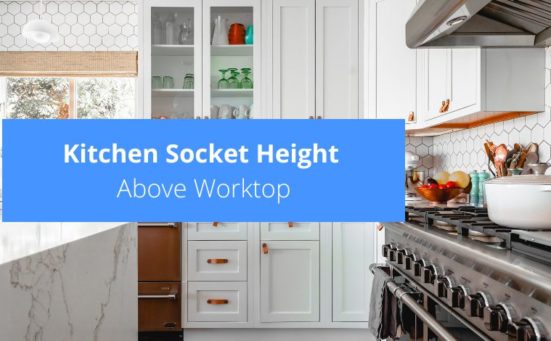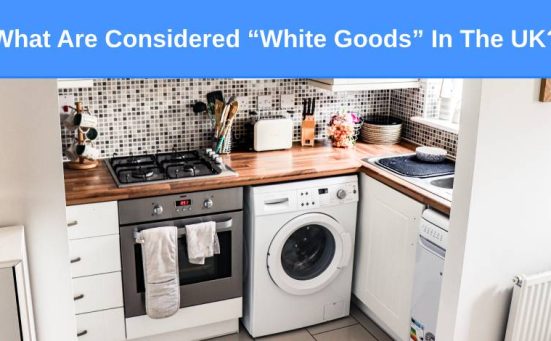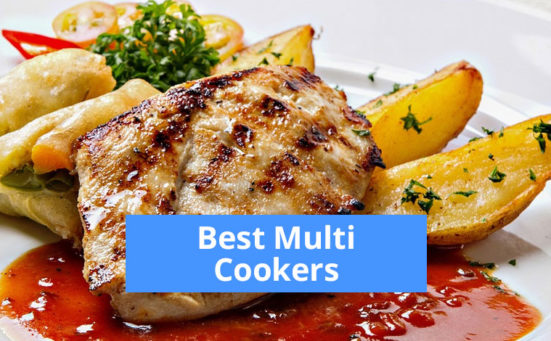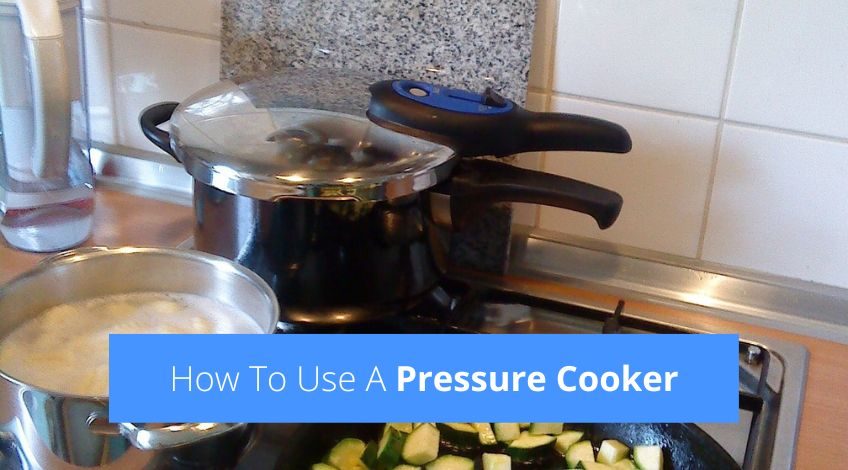
How To Use A Pressure Cooker
If you want to cook healthy, nutritious meals in a fraction of the time usually taken, then pressure cooking is definitely for you.If you prefer your own home cooked meals but have very little time, keep reading. The pressure cooker has to be the ultimate in one-pot cooking in super fast time.
Using a pressure cooker will revolutionise the way you cook food
From meat that falls off the bone to rich, tasty stews and risottos, the pressure cooker can cook great meals in less than 60 minutes. But it’s not just speed that makes a pressure cooker a great way to cook food. Cooking food in a pressure cooker will preserve far more nutrients and vitamins and work out saving you money too.
How Does A Pressure Cooker Work?
Pressure cookers have been around since the 17th century (1679) and have changed little since their invention. They use steam and increased pressure to raise the temperature in a sealed pot to around 30 degrees above boiling point to cook foods far faster than conventional cooking methods.
The traditional pressure cooker is used on the hob but there are also electronic and microwave versions available nowadays.
How To Use A Pressure Cooker?

The technique used to cook food in a pressure cooker can vary from model to model, but the basic principles are the same. Check your instructions for specifics but generally;
- Place ingredients in the pressure cooker pan
If your electric pressure cooker has a saute function you can brown meat and vegetables first or saute in your stovetop pressure cooker with the lid off. - Add water
The amount of water you add depends on the size and model of pressure cooker you own. But it will be far less than the usual amount of water you would add to a pot this size. Check your instruction manual for specifics. - Increase the heat
To build up pressure, you need to increase the heat of the ingredients inside the pressure cooker. On a stovetop model this is achieved by fitting the lid and turning up the heat to maximum. On electric models automatically via an internal heating element. Ensure the valve is closed to keep the steam inside. - Once the correct pressure is achieved, reduce the heat
This will be done automatically on an electric pressure cooker, but on a stovetop model, you’ll need to physically turn the hob down and monitor the cooking time unless your model has a built-in timer. - When the times up, release the pressure
This is usually done by turning the heat off completely and allowing the pan to cool naturally, or by opening a valve. There are some stovetop models that can be cooled down by the use of cold water. Either by pouring it over the lid, or standing the pot in a sink full of cold water. - When all of the pressure is released serve the food
After the steam has stopped escaping through the valve, it is safe to open the lid and dish the food out.
How To Get The Best From Your Pressure Cooker
Cooking with a pressure cooker will change the way you cook forever. You will be able to cook healthy, nutritious meals in a fraction of the time they would take using conventional cooking methods. As long as you follow these simple guidelines.
- Always add the correct amount of liquid
Check your instruction manual for quantities but it is essential that you never add too much or too little liquid to the pan. As a rough guide, the pot should always be between ½ to ⅔ full of liquid. This allows enough space for the steam and pressure to build up to cook your food correctly. - Cooking times start once the correct pressure is attained
You always time your cooking from the exact moment the correct pressure is reached inside the pot. On some models this can take around 10 minutes. - Saute foods for more flavour
For extra flavoursome foods, brown them first either in the stovetop pressure cooker with the lid off, in another pan, or in the electric pressure cooker (if it has this function). - Remember electric hobs take time to change temperature
Using a stovetop pressure cooker on an electric hob can be challenging as turning down the heat isn’t instant like it is on a gas hob. You’ll need to adjust your cooking times to accommodate this. - Maintenance is key to cooking great meals
As you are relying on the pressure cooker to cook all of your food, it’s important that you look after the pressure cooker properly. Inspect the rubber seal and replace it if it looks worn at all. This is the only way to seal the pot and create enough steam and pressure so it’s of vital importance. Likewise the valves on the lid, ensure they are always kept clean.
What Foods Can Be Cooked In A Pressure Cooker?
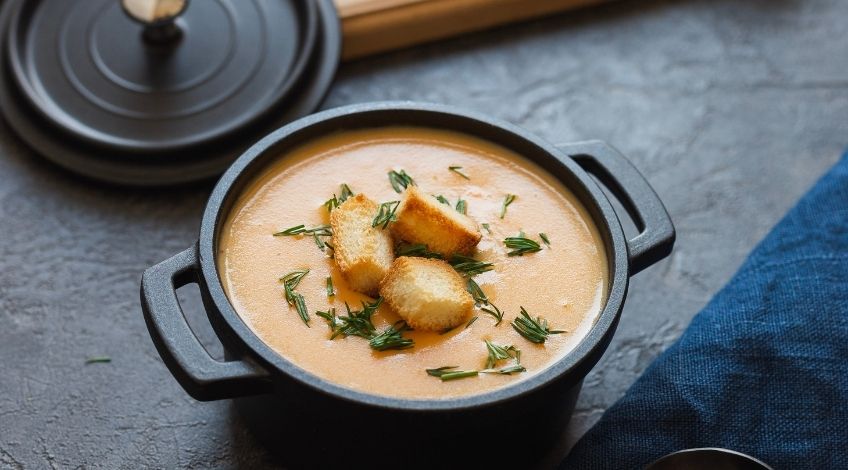
Basically any recipe with enough liquid content can be made in the pressure cooker. Pressure cookers differ from model to model, so you’ll need to experiment a bit at first to find out what works best. We suggest starting with the recipes in your instruction manual. Then, as your confidence grows, search online for pressure cooker recipes to try.
What You Can Cook
We have found the following foods cook well using a pressure cooker;
- Stews (meat and vegetable)
- Soups
- Risotto or other rice dishes
- Beans and pulses
- Tagines
- Steamed vegetables
- Puddings
- Tough (cheap) cuts of meat
- Beef
- Pork
- Chicken
- And many more
What You Can’t Cook
There are some foods that don’t do too well in a pressure cooker. These include;
- Pasta – it is technically possible to cook pasta in a pressure cooker but the results are often disappointing
- Cakes – moist sponges are fine but traditional cakes just don’t work
- Dairy – most dairy foods like cheese, sour cream or milk tend to curdle in a pressure cooker. If you need to add them, do it at the end, after the food has cooked
- Stir fry – the ingredients will become too mushy to be edible or recognisable as a stir fry
- Fried foods – pressure cookers use steam so any food cooked in a pressure cooker will become moist and will therefore never become crispy, fried food
- Foods that take different times – As the pressure cooker is sealed during cooking, all of the ingredients will be cooked for exactly the same time
- Fish – fish will become overcooked to the point of falling apart in a pressure cooker
- Excessive herbs and spices – The flavours and aromas of herbs and spices will become overpowering when cooked under pressure it’s best to add these once the cooking is completed
Frequently Asked Questions
The idea of using a pressure cooker is to get the pressure in the pot to the correct amount in the fastest time. As a general rule of thumb, you should always add at least one cup of liquid unless the recipe states otherwise.
It takes an average of 20 minutes at full pressure per lb of meat. This means a 3lb joint of meat will take approximately one hour to cook.
If you don’t put water in a pressure cooker, not only can the food not cook properly, but you run the very real risk of the pot exploding.
It is true that meat gets more tender the longer you pressure cook it. Up to a certain point, then the meat becomes over cooked, dry and inedible.
You can overcook meat in a pressure cooker and once that happens, there is no going back. The meat will be ruined. This is why we recommend sticking to the recipe.
It is possible to put too much water in a pressure cooker which will result in tasteless food or soups, sauces etc that are too thin.
To shorten the overall cooking time, you can put hot water in the pressure cooker. This will allow the pressure to build quicker as the water reaches boiling point and beyond.
Also, follow us on Pinterest ...

